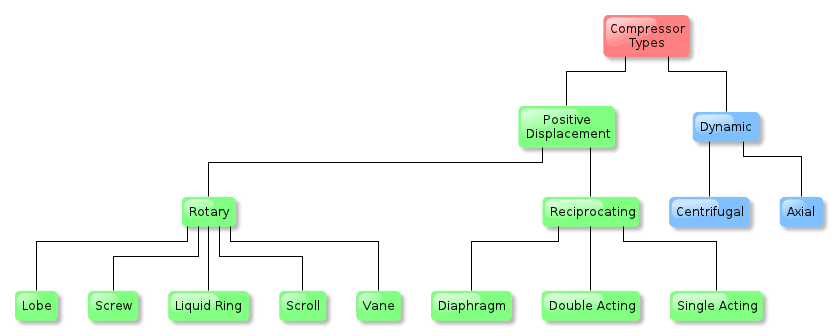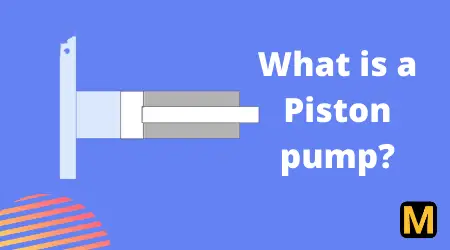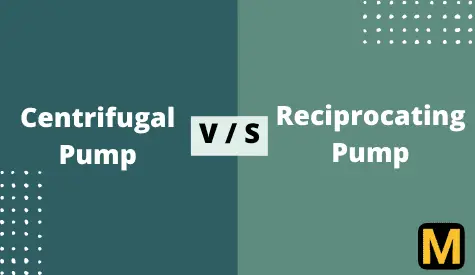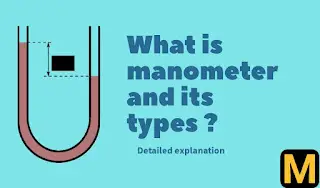What is an air compressor?
An air compressor can be defined as ” A mechanical device which intakes air (or other gas) at a lower or atmospheric pressure and compresses it, to deliver the gas at a higher pressure.
The air compressor requires power input to compress the air (Or any other gas). The air compressor consumes power and uses it to compress the air or gas and thus deliver the gas at high pressure.
During this process of compression, the temperature of the air or gas increases considerably, thus, cooling of the gas is required especially when the compression is very large.
Applications of compressors
Compressors have a wide range of applications, some of which are mention below.
- Compressors are used in automobiles as superchargers.
- They are also used for starting of IC engines.
- For spray painting in the paint shop.
- For cleaning purposes like automobiles and machine.
- For manufacturing pressurised beverages.
- They are also used in gas turbines.
- For delivering natural gas through pipes from source to its destination.
- For air conditioning and refrigeration purposes.
- Compressors are also used for filling the air in tubes of wheels of automobiles and cycles.
Types of Air compressor
As shown in the above figure compressors are classified into 2 major types .i.e.
- Positive displacement compressors
- Dynamic compressors
Positive displacement compressors
Positive displacement compressors are those type of compressors which compresses the air /gas due to displacement of a mechanical component like a piston.
In a positive displacement compressor, a certain volume of air/gas is taken in and is compressed to increase the pressure.
The positive displacement compressors are further classified into
Reciprocating air compressors
Reciprocating compressors are those type of compressors which make use of a reciprocating component like a piston or plunger enclosed in a cylinder. They reciprocate to and fro producing suction and compression of the air/gas.
The types of reciprocating compressors are:
- Single-acting reciprocating compressor
- Double acting reciprocating compressor
- Diaphragm reciprocating compressor
Single acting reciprocating compressor
It is one of the most widely used types of compressor in which air/gas is compressed by using a piston. The piston reciprocates to and fro in an enclosed cylinder causing suction and compression. The suction stroke begins when the piston moves downwards. Whereas, compression of air/gas occurs during the upward stroke.
Double acting reciprocating compressor
It is the same as Single-acting reciprocating compressor but instead of producing compression-only during the forward stroke, the Double acting reciprocating compressor produces compression during both the strokes hence the name double-acting.
It consists of 2 inlet and outlet valves each of which is on either side of the piston head. So while the piston is moving upwards it is compressing the upper part, however the part below the piston experiences suction. It is vice versa for the downward stroke.
Diaphragm reciprocating compressor –
The diaphragm reciprocating compressor is similar to the single-acting reciprocating compressor except that just before the inlet and outlet valves a diaphragm is placed. This creates a partition between the piston and valve. So when the piston reciprocates the diaphragm moves in and out, thus producing suction and compression.
Advantages of reciprocating compressor
- Easy and simple maintenance.
- High-pressure delivery.
- Comparatively inexpensive.
Limitations of reciprocating compressor
- Non-continuous flow rate (except double-acting reciprocating compressor).
- Due to many moving parts, there is considerable wear.
- The operation noise level is quite high.
We have a detailed article on reciprocating compressors which you can check it here.
Rotary compressor
Rotary compressors are another type of positive displacement compressors which compress the air/gas using a rotating mechanical component. Unlike a reciprocating compressor, this type of compressors usually doesn’t have valves. Rotary compressors are further classified based on their construction as :
- Rotary scroll compressor
- Rotary lobe compressor
- Rotary screw compressor
- Rotary vane compressor
Rotary scroll compressor
The scroll compressor consists of 2 spiral elements out which one is fixed and the other one rotates inside it. The design is such when the spiral element rotates inside it the air is trapped. This trapped air is then pushed forward by the spiral element. As the air advances forward it gets compressed due to size reduction.
 |
| Cacycle, Public domain, via Wikimedia Commons |
Advantages of scroll compressor
- This type of compressor requires low maintenance.
- Fewer parts required in construction.
- Since there is less moving parts lubrication required is very less.
- It is small in size.
Disadvantages of scroll compressor
- It is expensive.
- The volume output of the compressor is low.
- The output air has a high temperature.
Rotary lobe compressor
In the lobe compressor, two blades with cutouts in them are used. These blades or lobes are connected to an electric motor or an engine. The shafts of the lobes are parallel to each other. As the air enters the compressor, it gets compressed by the lobes as it is forced through the small area.
 |
| Jahobr, CC0, via Wikimedia Commons |
Rotary screw compressor
This type of compressor consists of 2 screws rotating inside a casing. The air enters in at one end and gets trapped between the rotors or screws and is carried away to the other end of the output. The air gets compressed between the gap of 2 rotors/screws and is exited through the other end. Rotary screw compressors come in two types, namely
- Oil injected screw compressor
- Oil-free screw compressor
Advantages of screw compressor
- It has a quiet operation.
- They can supply comparatively more volume of air.
- They are more energy-efficient as compared to the reciprocating compressor.
Disadvantages of scroll compressor
- Its design is complex.
- Comparatively expensive.
- Requires frequent maintenance.
Rotary vane compressor
The vane compressor consists of a rotating disc enclosed in a casing. The disc is slightly eccentric or offset. In the disc, there are slots provided for the vanes to slide in and out as shown in the figure below.
In vane compressors, the vanes are spring-loaded to maintain proper contact with the casing at all times.
The vane divides up the space making small compartments. When the air enters in the casing, the vanes trap the air and due to the eccentricity, the volume goes on decreasing thus compressing the air.
Advantages of vane compressor
- Simple design and construction.
- Maintainance of this compressor is easy and simple.
Disadvantages of vane compressor
- Since the vanes are in contact with the casing, wear of the vanes occurs.
- The vanes have to be replaced periodically, thus increasing the cost.
Dynamic compressors
Dynamic compressors are those type of compressors which do not use any external mechanical force to compress the air, instead, they produce compression by increasing the velocity of the air and then converting this high-velocity air into high pressure by placing obstructions in the airflow.
Dynamic compressors are further classified into 2 types:
- Centrifugal compressor
- Axial compressor
Centrifugal compressor
Centrifugal compressor is similar in construction to the centrifugal pump. The centrifugal compressor consists of a volute casing inside which the impeller is placed. The inlet is horizontal whereas the outlet is vertical as shown in the figure below.
 |
| Fantagu, Public domain, via Wikimedia Commons |
As the impeller starts spinning inside the casing, suction is created at the inlet. The air flows in and it is thrown radially outwards by the impeller at high velocity due to the centrifugal force, hence the name centrifugal compressor.
This high-velocity air then enters the casing. The volute casing of the compressor converts the kinetic energy of the air into pressure energy. Thus by this conversion compression is achieved and thus pressurized air is delivered via the outlet.
Advantages of centrifugal compressor
- Less maintenance is required.
- Highly reliable.
- Continuous flow rate.
- Highly efficient.
- It is small in length when compared to an axial flow compressor.
Limitations of centrifugal compressor
- Very high compression cannot be obtained.
- They are prone to stalling and choking.
Axial compressor
The axial compressor consists of rotating blades known as a rotor as well as stationary blades known as the stator. These blades are in the shape of an airfoil. The cross-section of the casing of the compressor goes on decreasing from the inlet to the outlet. The whole set up and the airflow is axially hence the name axial compressor.
The inlet as shown in the figure is at the front. The air enters through the inlet and is accelerated by the moving blades, thus increasing the velocity and pressure of the air.
The stator causes an obstruction thus diffusing the velocity and causing an increase in pressure. Each pair of the rotor and stator is known as a stage. As the air passes over the stages this sequence of goes on resulting in pressure rise.
Advantages of axial compressor
- Continuous flow is obtained.
- The mass flow rate is very large.
- Highly efficient.
- Large pressure rise can be obtained.
Limitations of axial compressor
- It has a complex design.
- It is quite expensive.
- It requires lots of initial power for starting.
- It occupies a considerable floor area.
Some FAQ
What is the difference between Positive displacement and dynamic compressors?
Positive displacement compressors are those types of compressors which make use of mechanical displacement to compress the air. Whereas, dynamic compressors increase the pressure of the air by increasing its velocity and then converting into high pressure instead of using mechanical compression.
What is the difference between reciprocating and rotary compressors?
In a reciprocating compressor, the output is not continuous, whereas, the rotary compressors provide continuous output. The delivery pressure of the reciprocating pump is high. However, the rotary compressor delivers at a comparatively lower pressure.
What is the difference between Centrifugal pump and Centrifugal compressor?
The centrifugal pump and centrifugal compressor both of them are similar in construction. However, the main difference is that of working fluid. The pump is used to deliver liquids whereas the compressor is used to deliver gases. Also, the pump is subjected to problems like cavitation and priming.
Also do consider subscribing by clicking the subscribe button and never miss a post by us!
We’ll be back soon with another interesting article till then Keep learning and read The Mechanical post!














